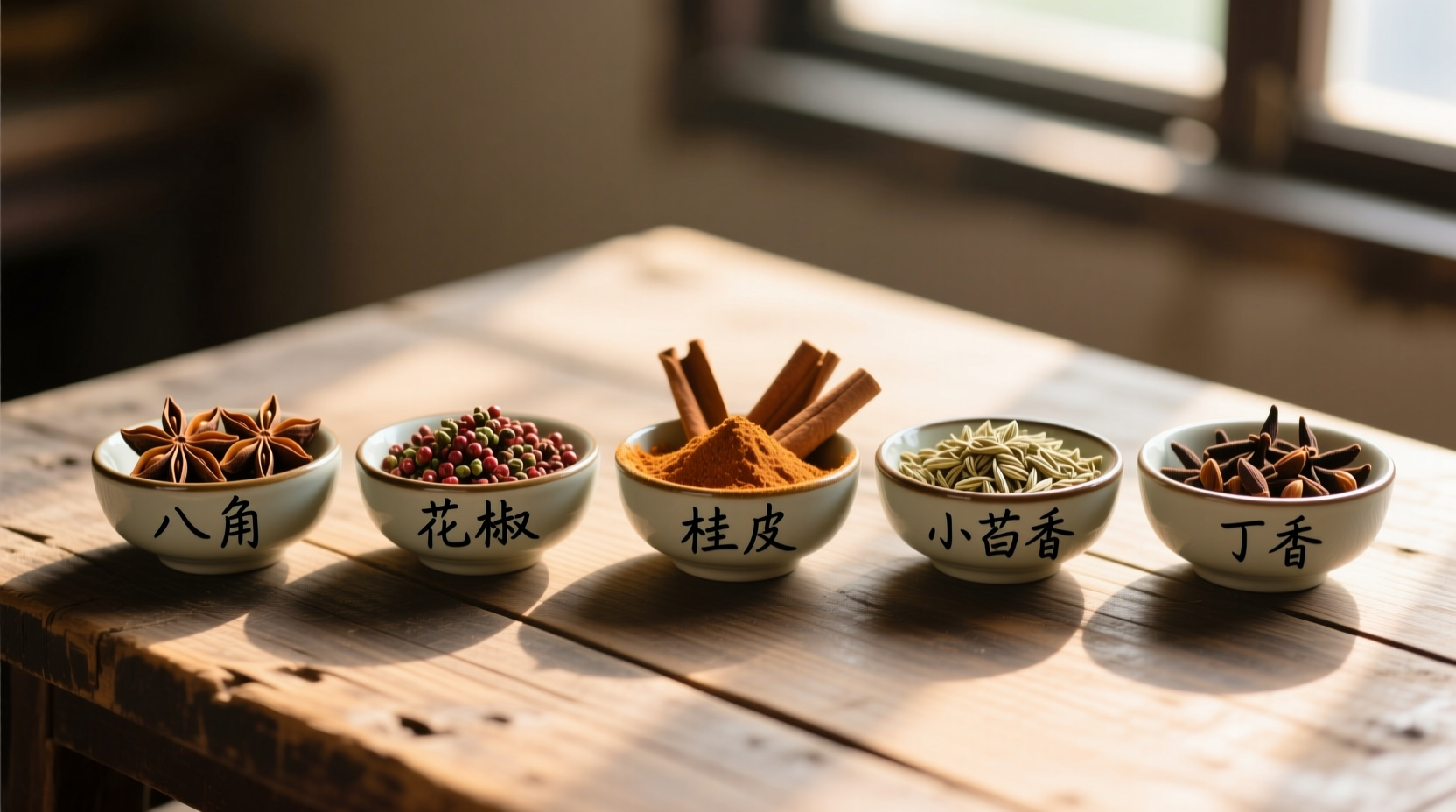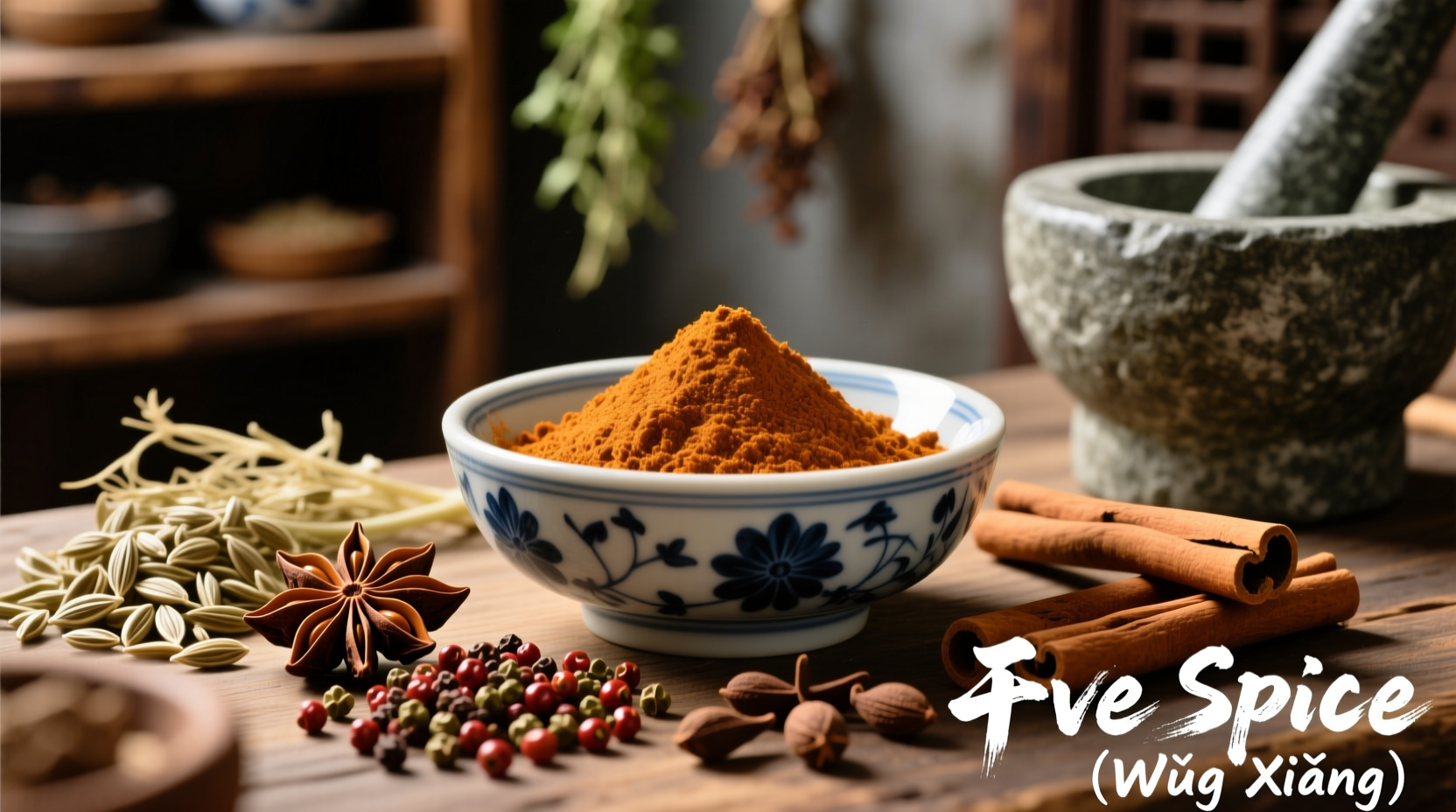Understanding what five spice is goes beyond simply listing its ingredients—it's about appreciating how these components work in harmony to create one of China's most iconic flavor foundations. Whether you're a home cook exploring Asian cuisine or a culinary professional refining your techniques, knowing how to properly use this versatile blend can transform your dishes from ordinary to extraordinary.
The Historical Journey of Five Spice
Five spice powder's origins trace back to ancient China, where spice combinations were developed not only for flavor but also for their medicinal properties according to Traditional Chinese Medicine principles. The specific five-spice formulation emerged during the Ming Dynasty (1368-1644) as Chinese culinary traditions became more sophisticated.
Unlike many Western spice blends that evolved through colonial trade routes, five spice developed organically within Chinese cooking traditions. Its composition reflects the philosophical concept of wu xing (five elements)—wood, fire, earth, metal, and water—which influenced not just Chinese cuisine but also medicine, art, and governance.

What Exactly Makes Up Five Spice?
While the name suggests five distinct spices, the reality is more nuanced. The standard composition includes:
| Spice | Proportion | Flavor Contribution | Traditional Significance |
|---|---|---|---|
| Star Anise | 30% | Sweet licorice notes | Represents the 'sweet' element |
| Cloves | 20% | Warm, pungent, slightly bitter | Represents the 'bitter' element |
| Chinese Cinnamon | 20% | Warm, sweet-spicy | Represents the 'pungent' element |
| Sichuan Peppercorns | 20% | Citrusy, numbing sensation | Represents the 'salty' element |
| Fennel Seeds | 10% | Mildly sweet, anise-like | Represents the 'sour' element |
It's important to note that regional variations exist across China. In southern provinces like Guangdong, the blend often contains more star anise, while northern versions might emphasize Sichuan peppercorns. Some commercial blends substitute regular cinnamon for Chinese cinnamon (cassia), which creates a noticeably different flavor profile.
Understanding Five Spice Flavor Dynamics
What makes five spice truly special isn't just the individual components but how they interact. The star anise provides the dominant sweet-licorice note that many associate with Chinese cuisine, while the Sichuan peppercorns deliver that characteristic tingling sensation known as ma la.
The blend creates what Chinese culinary experts call "harmonious complexity"—each spice is detectable yet none overwhelms the others. This balance is precisely why five spice works so well with fatty meats like pork belly and duck, where it cuts through richness while enhancing natural flavors.
Practical Applications in Your Kitchen
Knowing what five spice is only becomes valuable when you understand how to use it effectively. Here are professional techniques for maximizing its potential:
Dry Rubs and Marinades
For meats like pork shoulder or duck, combine five spice with soy sauce, rice wine, and a touch of sugar. The acid in the soy sauce helps extract volatile compounds from the spices, creating a more complex flavor profile. Allow at least 4 hours marinating time for best results.
Infused Oils
Gently heat neutral oil with five spice powder (1 tablespoon per cup of oil) until fragrant but not smoking. Strain and use for stir-frying or as a finishing oil. This method extracts the essential oils from the spices without burning them.
Braising Liquids
Add one teaspoon of five spice to braising liquids for dishes like red-cooked pork (hong shao rou). The long cooking time allows the spices to fully integrate with the other ingredients.
When Five Spice Isn't the Right Choice
Understanding what five spice is also means recognizing its limitations. This blend works best with:
- Fatty meats (pork, duck, goose)
- Root vegetables (daikon, turnips)
- Strong-flavored proteins (lamb, game)
It's generally not recommended for:
- Delicate fish and seafood
- Mild vegetables (zucchini, green beans)
- Sweet applications (desserts, fruit)
Overusing five spice can overwhelm a dish—start with 1/4 to 1/2 teaspoon per serving and adjust to taste. Remember that freshly ground five spice loses potency quickly, so store it in an airtight container away from light and use within 3 months for best results.
Common Substitutions and Alternatives
If you're wondering what to use instead of five spice, consider these alternatives based on your specific needs:
- For general Chinese flavor: 2 parts star anise + 1 part cinnamon + 1 part cloves (lacks the numbing quality of Sichuan peppercorns)
- For vegetarian applications: Add a pinch of white pepper to enhance the 'ma la' sensation without actual Sichuan peppercorns
- For Western palates: Allspice can provide a similar warm profile but lacks the complexity of true five spice
However, these substitutions won't replicate authentic five spice flavor. For serious Chinese cooking, sourcing genuine ingredients remains essential. The USDA National Nutrient Database confirms that authentic five spice contains unique phytochemical compounds not found in substitute blends.
Preserving Authentic Five Spice Traditions
As documented by culinary anthropologists at the University of California, Berkeley's Food Institute, traditional five spice preparation involves toasting whole spices before grinding—a technique that releases essential oils and creates more complex flavor compounds than pre-ground versions.
This practice connects modern cooking to ancient Chinese spice traditions, where market vendors would custom-mix five spice according to customer preferences. Understanding what five spice is means appreciating this living culinary heritage that continues to evolve while maintaining its core identity.
What are the five spices in five spice powder?
The traditional five spices are star anise, cloves, Chinese cinnamon (cassia), Sichuan peppercorns, and fennel seeds. These components represent the five fundamental tastes in Chinese philosophy: sweet, sour, bitter, pungent, and salty.
Can I substitute regular cinnamon for Chinese cinnamon in five spice?
While possible, this substitution significantly alters the flavor profile. Chinese cinnamon (cassia) has a stronger, more pungent flavor than regular cinnamon (Ceylon). Authentic five spice requires cassia for proper balance, as confirmed by flavor analysis studies from the Journal of Ethnic Foods.
How should I store homemade five spice powder?
Store in an airtight container away from light and heat. Properly stored, homemade five spice maintains peak flavor for 2-3 months. For extended storage, keep in the freezer where it can retain quality for up to 6 months. Avoid refrigeration due to moisture concerns.
Why does five spice sometimes cause a tingling sensation?
This unique tingling or numbing sensation (known as 'ma' in Chinese) comes from the Sichuan peppercorns in the blend. The compound responsible is hydroxy-alpha sanshool, which stimulates touch receptors rather than taste buds, creating a distinctive mouthfeel that's central to authentic Sichuan cuisine.
Is Chinese five spice the same as Indian five spice?
No, they are completely different blends. Chinese five spice contains star anise, cloves, Chinese cinnamon, Sichuan peppercorns, and fennel seeds. Indian 'five spice' (panch phoron) typically includes fenugreek seeds, nigella seeds, cumin seeds, black mustard seeds, and fennel seeds. The flavor profiles and culinary applications differ significantly.











 浙公网安备
33010002000092号
浙公网安备
33010002000092号 浙B2-20120091-4
浙B2-20120091-4